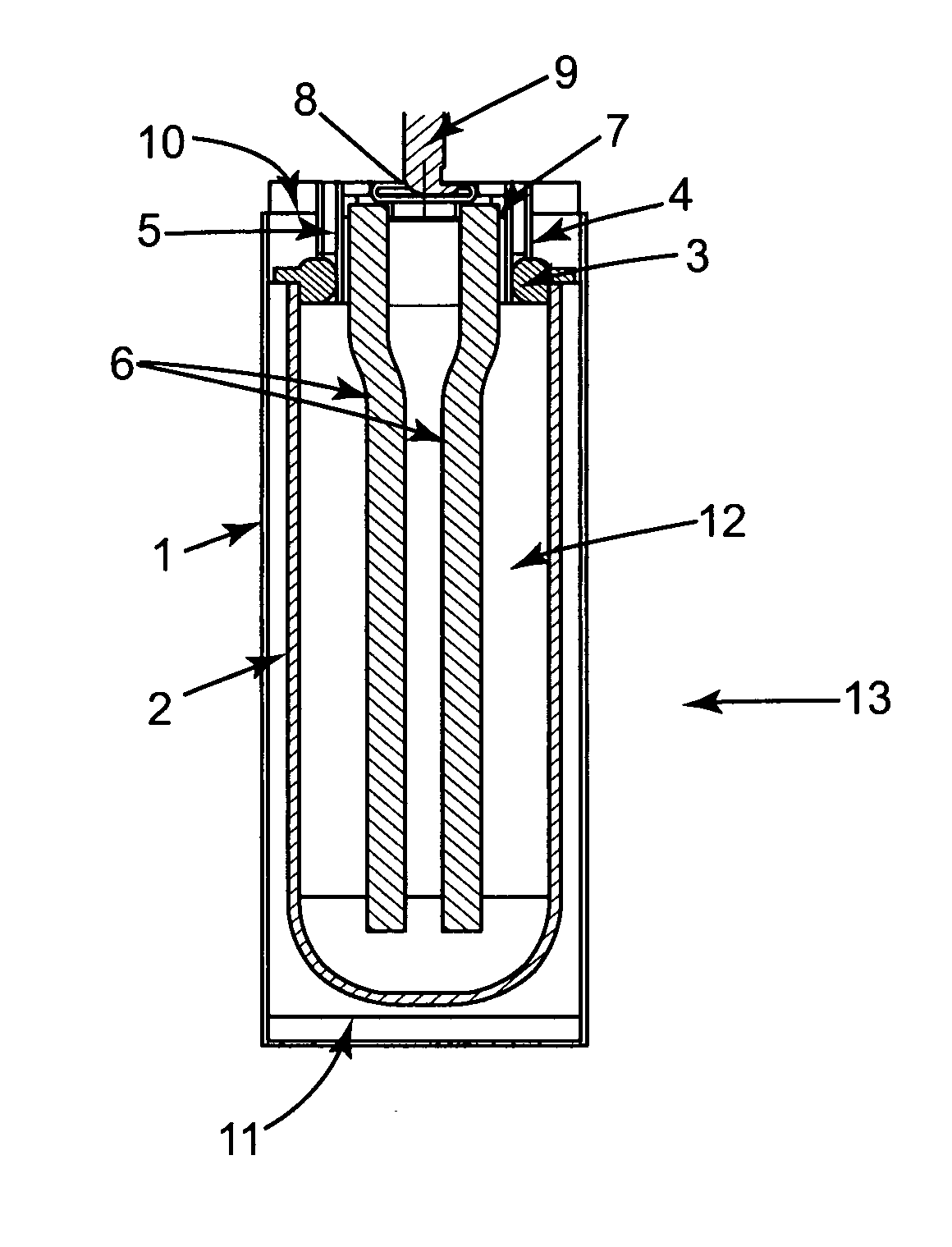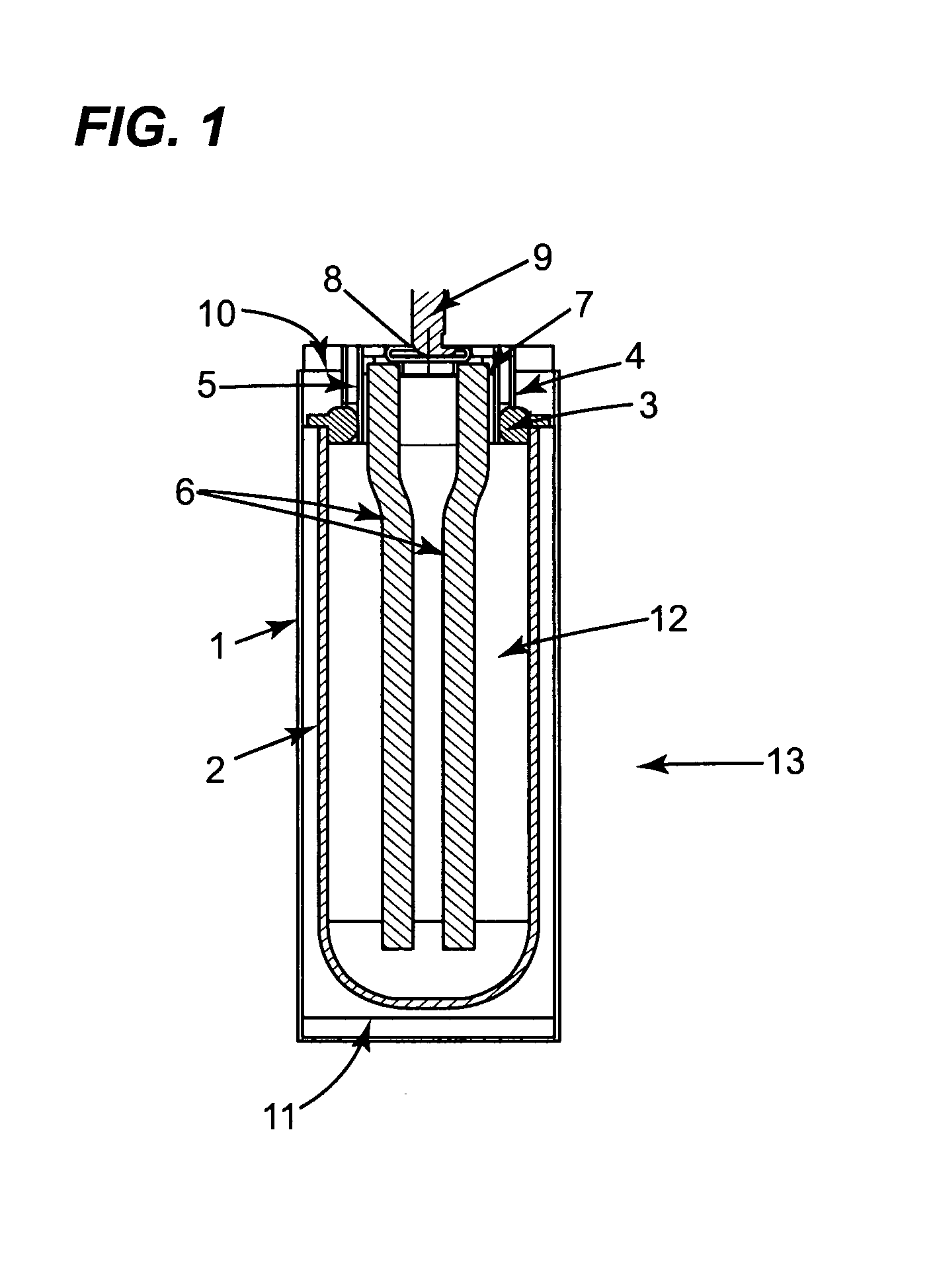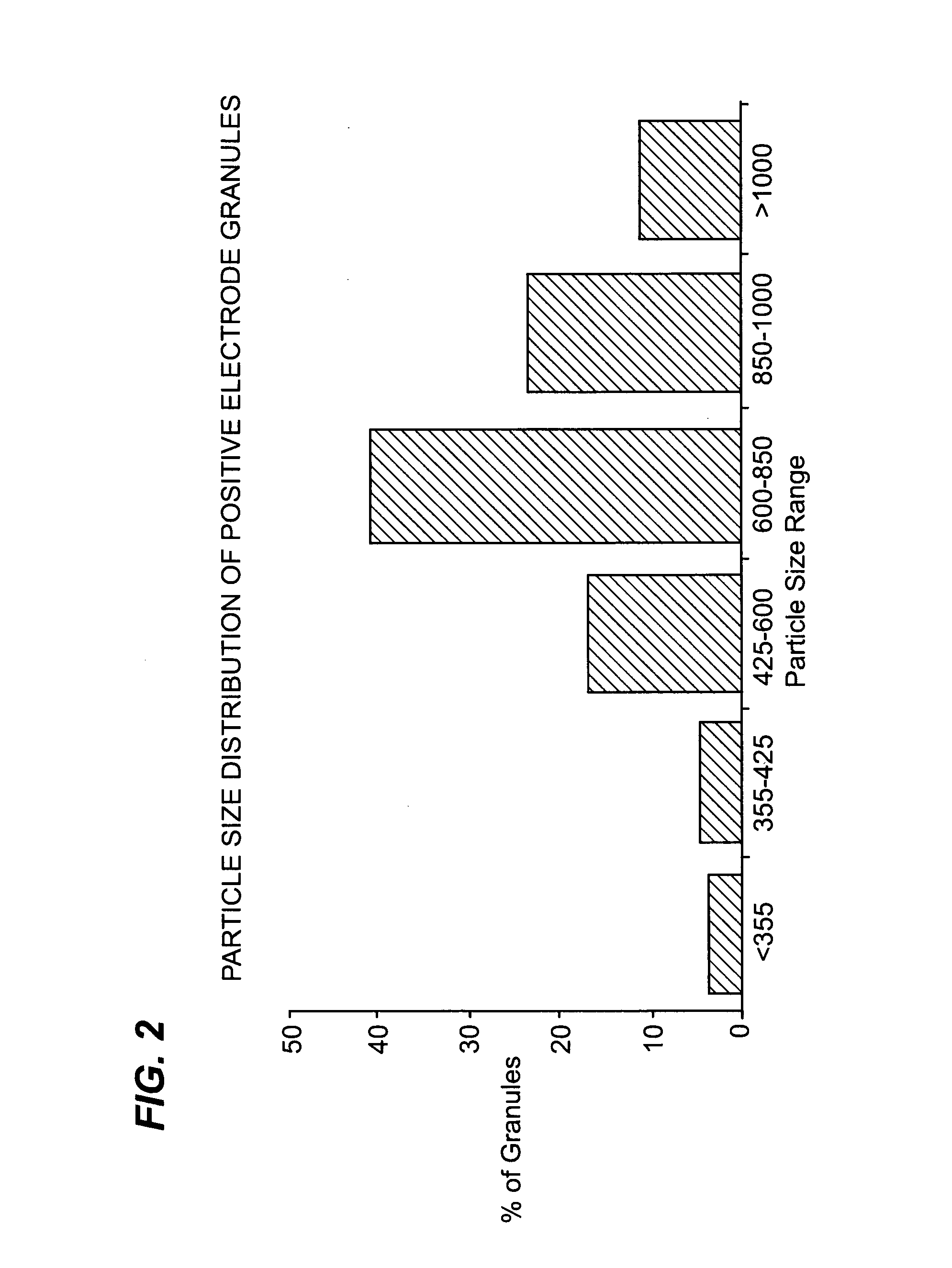Cathode for an electrochemical cell
a cathode and electrochemical technology, applied in the direction of non-aqueous electrolyte cells, cell components, conductors, etc., can solve the problems of reducing the capacity density of the resulting electrode, reducing the efficiency and increasing the rate of degradation of the performance of the electrochemical cell. , to achieve the effect of adversely increasing the hygroscopicity of the resulting cathod
- Summary
- Abstract
- Description
- Claims
- Application Information
AI Technical Summary
Benefits of technology
Problems solved by technology
Method used
Image
Examples
example 1
Construction of an Electrochemical Cell
[0084]Referring to FIG. 1, the electrochemical cell 13 in accordance with the invention has a cylindrical casing 1. A beta alumina tube 2 is located concentrically within the casing. The tube 2 is attached to an alpha alumina ring 3, by means of a glass seal. Two nickel parts 4 and 5 are bonded to the alpha alumina ring 3 to provide a leak tight seal. A current collector assembly comprising two nickel wires 6 attached to a metal ring 7, is welded to the inner nickel ring 5. A closure cap 8 with positive terminal 9 is welded to the metal ring 7, closing off tube 2. A bridging piece 10 is welded to the outer nickel part 4 and the case 1 is welded to this bridging piece. A metal end cap 11 is welded to the case 1.
[0085]Around the outside of the tube 2 is a close fitting rolled steel shim (not shown) having at least two turns. This covers most of the tube 2 and extends to and is in electrical contact to the end cap 11. This configuration provides t...
example 2
[0087]Positive electrode granules were manufactured using known methods by which a blended mixture of sodium chloride powder (a grade known as Microfine salt available from Custom Powders Ltd) having a particle size of less than 63 microns, nickel (INCO 287) powder, iron powder and small quantities of sodium fluoride, sodium iodide and aluminium powder, was dried and compacted into a dense sheet before being broken into granules with a size range as shown in FIG. 2. 80 g of these granules were vibrated into a beta-alumina tube of cell 13 in Example 1 (having an internal diameter of 28.5 mm and internal volume of 48 cc). The cell was heated to about 300° C. to remove any moisture. 37 g of molten sodium chloroaluminate was introduced under vacuum into the positive electrode compartment so that the molten salt dispersed about (impregnated) the granules. The positive electrode compartment was then sealed by welding on a top cap. The cell was then heated to 300° C. and charged at a curre...
example 3
[0089]Positive electrode granules were manufactured in accordance with the method of Example 2 above. 80 g of these granules were vibrated into a beta alumina tube of cell 13 in Example 1 (having an internal diameter of 28.5 mm and internal volume of 48 cc). Microfine salt was added to the granules whilst the beta alumina tube was being vibrated. The addition of Microfine salt was halted when it was visible on top of the granule bed. 10 g of Microfine salt was added. The cell was heated to above the melting point of the sodium chloroaluminate and 25.1 g of molten sodium chloroaluminate was introduced into the positive electrode compartment so that the molten salt dispersed about (impregnated) the granules and powder mix (Microfine salt). The positive electrode compartment was then sealed by welding on a top cap. The cell was heated to 300° C. and charged at a maximum current of 0.5 amps at a voltage of 2.67V. As in Example 2, the charge was terminated when the current fell to 0.2 am...
PUM
 Login to View More
Login to View More Abstract
Description
Claims
Application Information
 Login to View More
Login to View More - R&D
- Intellectual Property
- Life Sciences
- Materials
- Tech Scout
- Unparalleled Data Quality
- Higher Quality Content
- 60% Fewer Hallucinations
Browse by: Latest US Patents, China's latest patents, Technical Efficacy Thesaurus, Application Domain, Technology Topic, Popular Technical Reports.
© 2025 PatSnap. All rights reserved.Legal|Privacy policy|Modern Slavery Act Transparency Statement|Sitemap|About US| Contact US: help@patsnap.com



